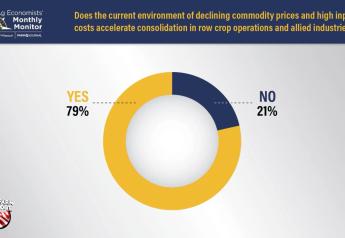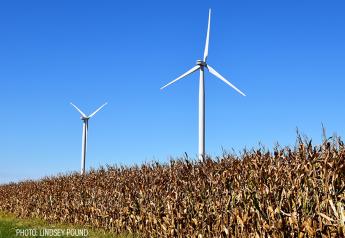Even With 90 Million Acres of Soybeans, Here's Why the Soybean Price Surge Could Stay Steadfast

The bull market gripping ahold of agricultural commodities right now is one driven by not just tight supplies, but monster demand. As China continues to source more key commodities such as corn and soybeans, there are questions about if China’s corn purchases will actually ship.
“I still think there's reason to be concerned about the corn shipments, and that's one reason I think USDA was conservative and in raising its corn export target,” Arlan Suderman of StoneX told attendees during the 2021 Top Producer Seminar Online event. “Frankly, their balance sheet doesn't work the way they have it right now, and on soybeans, it's a totally different story.”
Suderman says not only are the purchases of soybeans ahead of pace, so are actual shipments.
“If you look at the seasonality of soybean shipments, we're currently for the year-to-date 370 million bushels above the pace we should be at in order to hit USDA target,” Suderman said during the U.S. Farm Report marketing discussion during Top Producer. “Those are soybeans that are already out the door. That means we should only average about 11.5 million bushels per week the rest of the marketing year to hit USDA’s target. We're obviously going to exceed that near term.”
Suderman says while China will turn its attention to the crop being harvested out of Brazil, there’s still a gap between now and when those soybeans actually make it to China.
“It takes 45 days for those shipments from Brazil that are just picking up now to reach ports in China, and it takes about 18 days to fill the gap with some last-minute purchases out of the PNW,” says Suderman. “So, I think we will have a little bit more. USDA is eventually going to be forced to increase its export target.”
Suderman says if USDA’s hand is forced to make further adjustments to export forecasts for soybeans, those bushels will need to be sourced from somewhere. He thinks that could be tough when buyers are already facing extremely tight soybean supplies.
“Where does that come from? You have to cut crush that means running out of beans in some locations in the Midwest this summer for crush facilities. We're seeing some livestock producers trying to line up their coverage a meal for this summer and processors saying we're not going to promise you anything beyond the spring,” he says.
Searching for Soybean Acres
As corn and soybean prices surge, so does the battle for acres. USDA’s Ag Outlook Forum showed a projected 90 million acres of soybeans planted this year and 92 million acres in corn. Naomi Blohm of Total Farm Marketing by Stewart Peterson told the group more than 90 million acres of soybeans will be needed to solve the tight stocks situation.
“It's not enough to cure it unless we have a record production years and perfect weather throughout the spring and summer,” said Blohm. “If the yield comes out to be 53 bushels an acre on those 90 million acres planted, you're looking at ending stocks growing to maybe about 270 million bushels. So that is up from 120, but again, that's not enough to just make prices collapse.”
Blohm says that’s why the bullish price action for commodities like soybeans may be more than a single year event.
“You have to then get into another growing year the following year,” says Blohm. “And this year, if yield comes in closer to 51, which is still a great number overall, then you're looking at ending stocks coming in at 100 million bushels, and we're going see this whole price scenario definitely last into 2022.
Blohm reminded farmers there’s a lot at stake right now, and prices can quickly change as the acreage forecast possibly grows.
“We're not out of the woods yet in terms of making sure that the United States is going to have another perfect record year,” she said. “There's a lot that can happen. And there's going to be a lot of fantastic pricing opportunities along the way. So, make sure you are in tune with your marketing plan and your needs. And that you're making some great profitable sales when appropriate for your farm.”
Suderman echoed Blohm’s comments, saying the U.S. needs to produce big yields.
“As Naomi indicated, we need to have a bumper crop in the United States to try to build supplies, and then it's hard to really build them very much,” he added. “We're not going to have much margin for error. I think we're going to be shipping back and forth between Brazil trying to shift it from one market side or production cycle to the other. And the market is going to have to do that work. And so that's going to give us periodic opportunities in the market.”
Online Top Producer Summit
Join Naomi Blohm, Mark Gold and Arlan Suderman for an in-depth marketing discussion during the Online Top Producer Summit. You can still register for the Online Top Producer Summit, which gives you access to content through March 31. Use the code “ONDEMAND” to take $25 off your registration fee.
You can also dive into more coverage of the Top Producer Summit this week.







